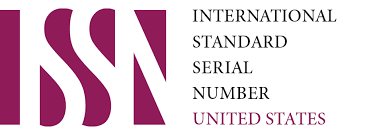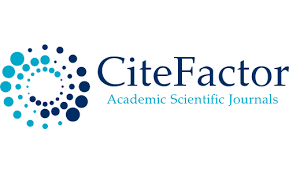Phonetic Laws Relating To The Vowels In Namangan Dialects
Keywords:
Ethno-linguistic facts, dialect, Kipchak and Karluk dialects, accentAbstract
Today, when carrying out reforms for the development of Uzbek society, full opportunities and conditions are created for the fulfillment of the tasks set for Uzbek linguistics, purposeful research work is being carried out on the issue of a comprehensive study of the Uzbek language. At the same time, the study of the features of Uzbek dialects, based on the theoretical foundations of areal linguistic research, is defined as one of the priority areas in the historical-comparative and ethnolinguistic aspects. This area consists of imperfect, simple descriptive and illustrative aspects, uncertain places need to be studied and filled in based on new views, from a mental point of view. Research using areal-typological and areal-linguistic methods, which gave Mahmud Kashgar in the Turkic languages the starting point of any linguistic theory and concepts, the study of dialects, their specific features, remains one of the important issues today. The emergence of areal linguistics has opened up ample opportunities for assessing new problems and concepts in the field of dialectology, for their solution in a new way. Based on the theoretical basis of dialect and slang areas in the holistic study of the language system, the fact that historical-comparative and ethnological studies are identified as one of the priority areas imposes new responsibilities on Uzbek linguistics and Uzbek linguists. The article gives an idea of the peculiarities of the Namangan Kypchak and Karluk dialects, the historical genesis of the vowel system, the problems of their distribution and use. The phonetic-phonological linguistic character of the dialect is a comparative-historical reflection of the processes of events of properties and patterns. In turn, the article also describes opinions about the events of the umlaut in the Turkic dialects of singharmonism and the Karluk dialects in the Kipchak dialects related to vowels in the Turkic languages.
References
Abdullaev F.A. Phonetics of Khorezm dialects. - Tashkent: Fan, 1967. – p. 345.
Aliev. A.Yu. Namangan group of dialects of the Uzbek language. Dissertation paper of the doctor of Philological sciences. - Tashkent, 1975. – p. 90.
Atamirzayeva S. Experimental phonetic study of the Namangan dialect of the Uzbek language. - Tashkent, 1974. – p. 195.
Bogoroditsky V.A. The Laws of synharmonism in the Turkic languages. Bulletin of the scientific society of theater studies. - Kazan, 1927. - p. 118.
Borovkov A.K. On the characteristics of Uzbek “umlaut” or “uygurized” dialects. Frunze, 1946, p. 29-31.
Borovkov A.K. Uzbek dialects of Namangan region. - Tashkent, 1963. - p. 58-74.
Jamalkhanov H. The current Uzbek literary language. 1-book. - Tashkent, 2008. – p. 135.
Dmitriev N.K. Grammar of the Bashkir language. - M., 1948. - p. 214.
Iskhakov G. Vowel harmony in the Turkic languages. ISGTY, I. 1968 - p. 104.
Kononov A.N. Grammar of the modern Uzbek literary language. - L.: Nauka, 1980. - p. 162.
Melioransky P.M. Arab-philologist about the Turkish language, St. Petersburg, 1900. - p. 3-18.
Musabaev K.M. Grammar of the Karaim language. - Moscow: Nauka, 1964. - p. 150.
Mirtojiev M.M. Phonetics of the Uzbek language. - Tashkent: Fan, 2013. – p. 423.
Nabieva D. Appearance of general-characteristically dialectics in different layers of the Uzbek language. – Tashkent: Shark. – 2005. – p. 124.
Nurmanov A. Selected works. II - Vol. – Tashkent: Akademnashr, 2012. – p. 441.
Polivanov E.D. Materials on the grammar of the Uzbek language. I. Introduction. - Tashkent, 1935. - p. 217.
Polivanov E.D. Uzbek dialectology and Uzbek literary language. – Tashkent: Uz.state publishing house, 1933. – p. 45-90.
Reshetov V., Shoabdurakhmanov Sh. Uzbek dialectology. – Tashkent: Ukituvchi, 1978. – p. 231.
Reshetov V.V. Karluk-chigil-uyghur dialects of the Uzbek language//Issues of Uzbek language and literature. – 1960; – p. 34-47.
Reshetov V.V. Uzbek language. I.-Tashkent: Uz. Gosizdat, 1959. - p. 301.
Tenishev E.R. The structure of the Salar language. - M.: 1976. - p. 210.
Trubetskoy N.S. Selected works on Philology. Phonology and linguistic geography, Moscow: Progress, 1987, p. 34.
Trubetskoy N.S. Fundamentals of phonology/Trans. From German A.A. Kholodovich; Edited By S.D. Kantsielson. - M.: Aspect Press. - 2000. – p. 352. (Series “Classic textbook”); Selected works on Philology. Phonology and linguistic geography, Moscow: Progress, 1987, p. 352.
Umarov E. Are there front tongue sounds in Uzbek//Uzbek language and literature. – No. 4. -1994. P. 52-53.
Sherbak A.M. Comparative phonetics of Turkic languages. – L., 1970. – p. 203.
Kashgariy M. Devonu lugotit tirk. I. –Tashkent, 1960. – p. 499.
Downloads
Published
Issue
Section
License

This work is licensed under a Creative Commons Attribution-NonCommercial 4.0 International License.
User Rights
Under the Creative Commons Attribution-NonCommercial 4.0 International (CC-BY-NC), the author (s) and users are free to share (copy, distribute and transmit the contribution).
Rights of Authors
Authors retain the following rights:
1. Copyright and other proprietary rights relating to the article, such as patent rights,
2. the right to use the substance of the article in future works, including lectures and books,
3. the right to reproduce the article for own purposes, provided the copies are not offered for sale,
4. the right to self-archive the article.














